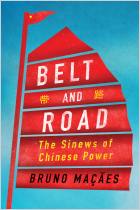Join getAbstract to access the summary!

Join getAbstract to access the summary!
Peter Cai
Understanding China’s Belt and Road Initiative
Lowy Institute, 2017
What's inside?
China is planning a new Silk Road.
Recommendation
China’s rapid ascendancy inspires both wonder and trepidation. Some are suspicious of rosy annual growth reports, others suggest that 5-year plans set by a massive central government could never improve upon the invisible hand of the free market, especially in a world economy where capitalism has long been king. Still others predict that a growing middle class is sure to detonate in a spectacular windstorm of political unrest, particularly in light of Xi’s crackdown on freedom of speech and information. But if history is any indication, there’s one panacea that can mitigate all kinds of political unrest, and that’s raw, unadulterated economic growth. So when China announces a move that amounts to “arguably one of the largest development plans in modern history,” speculation is inevitable. Does the One Belt, One Road (OBOR) initiative primarily serve Beijing’s economic, domestic, or geopolitical goals? The Lowy Institute’s Peter Cai offers a unique perspective on this question.
Summary
About the Author
Peter Cai has written for The Australian, Business Spectator, The Age and The Sydney Morning Herald.





















Comment on this summary